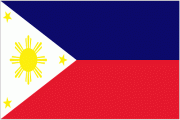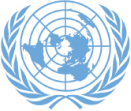Ms. Chair, Excellencies, Colleagues, a pleasant morning, afternoon, and evening to all of you.
The Philippines is one of the most disaster-prone countries in the world. At least 74 percent of our population is exposed to multiple natural hazards such as typhoons, floods, landslides, and droughts. In addition, the increasing temperature and changing precipitation patterns significantly affect our agricultural sector, a major source of livelihood for millions of Filipinos.
According to the Global Climate Risk Index 2020, the Philippines is the second most affected country by climate change in 2018, and the fourth most affected country between 1999 and 2018. Annual average losses amount to 3.1 billion US dollars or 0.57% of the country’s GDP.
Historical data shows that an average of 20 typhoons enter the Philippine Area of Responsibility each year. Last year, a total of 22 typhoons entered the country and it only took three of these typhoons to displace 105,000 families.
On November 8, 2013, Super Typhoon Haiyan, a Category 5 storm, made landfall in the Philippines and was among the most powerful tropical cyclones ever recorded on Earth. More than 6,300 Filipinos died and it cost around 2 billion US dollars in damages. Haiyan demonstrated the inherent challenges of large-scale displacement and pushed the Philippine government to re-evaluate its risk reduction and climate change adaptation strategies.
These worsening weather conditions and natural disasters, especially in rural areas, have driven migration in the Philippines. Studies show that when people can no longer adapt to and reduce the risks of extreme weather conditions, they migrate. In fact, low agricultural yields have pushed Filipino farmers to enter other labor markets, with some ultimately pursuing work overseas.
Looking at climate change from a gender lens would also show that the impacts of climate change are different for women and men. Women are more vulnerable. Climate change exacerbates already existing gender inequalities such as discrimination, threats to health, loss of livelihood, displacement, forced migration, poverty, human trafficking, gender-based violence, food insecurity, and access to essential services. Yet in times of disaster, women are the primary caregivers. They bear the burden of caring for the sick. They also carry out much of the household workload after a disaster.
Women have distinct nutritional and healthcare needs that make coping with disasters tougher and harsher. In the aftermath of Typhoon Haiyan, an estimated 250,000 pregnant women had no access to maternal health services. As women bear the burden of climate impacts, it is important that we pay attention to their experiences, interests, and knowledge.
The Philippine government strives to apply a whole-of-society and last mile approach in climate action planning, specifically in the implementation of the Philippines’ first Nationally Determined Contributions and National Climate Risk Management Framework, which are anchored in the National Climate Change Action Plan.
At the national level, government agencies continue to engage all sectors of society in their plans, programs, and projects, following the whole-of-society approach. Further, local government units are immensely significant in cascading risk-based and evidenced-based information to each community and household to attain the last-mile approach and to ensure that no one is left behind.
In the Philippines, our Climate Change Commission, which leads the policymaking, coordinating, and monitoring of climate change in the Philippines, continues to collectively establish the needed evidence supporting action and coordination among key government agencies. They have also partnered with the IOM on studying the current correlation of climate change and migration within the Philippine setting.
The Philippine Government also adopted the National Disaster Risk Reduction and Management Plan 2020-2030. The Plan establishes the linkage between disaster risk reduction and management, climate change adaptation, and human security by focusing on climate and disaster risks, including biological risks, towards sustainable development.
In addressing the importance of promoting and supporting regional and local action on disaster risk reduction and management, one key point that the updated Plan advocates is the employment of a multi-sectoral approach. Effective disaster risk reduction actions need planning and implementation across all key sectors such as agriculture, migration, environment, health, infrastructure, communication technology and education.
The Philippine Government enjoins local government units, non-government organization, civil society organizations, academe, scientific community, and individuals to take active roles and participation in the implementation of these plans. Further, the Philippine government endeavors to couple these with fit-for-purpose implementation support, including technology development, capacity-building, partnerships and networking, and financing.
Indeed, migration and displacement due to climate change is a theme of global significance especially for vulnerable countries like the Philippines. As a GCM Champion Country, it is our duty to remind nations of our collective commitment under Objective 2, Section 18 of the GCM to create environmental conditions for people to lead peaceful, productive, and sustainable lives in their own country to fulfil their personal aspirations, and to ensure that desperation and deteriorating environments do not compel them to seek livelihood elsewhere through irregular migration.
Thank you very much.


